Text
The Open Cluster and Dumbbell Nebula
M26 & M27

M26 like many open clusters with the milky way in the background can be challenging to find, but what makes this particular cluster interesting is the low density of stars at it's heart.
Initially it was believed that some of the dust and gas that created the cluster must be still there obscuring, but in an age of IR telescopes, we know that not to be true, rather it seems that the dust and gas that birthed these stars may have been a shell like arrangement, the remnant of supernova, as the bow shockwave moves outwards it interacts with dust and gas in the area and can cause star formation as it does.
M27 is a planetary nebula, in fact, the very first one discovered.

The name "planetary nebula" only really refers to the orb like shape, and that when viewed in low-res telescopes of the era of Messier, they probably looked a little like planets.

In reality, they come in many shapes, depending on the distance from a binary partner or the way the star was when it finally collapsed to a white dwarf and let go of it's atmosphere.
In the Hubble image above, you can see small knots and clumps along with different colours representing the different elements ejected from the star, and the dust and gas surrounding it at the time.
Sadly, these beautiful objects don't last too long, a 100,000 years and it's spread out so thin, it's no longer visible.
25 notes
·
View notes
Text
Messier 25 - Open Cluster

The open cluster without a NGC number !
Whilst Messier included it in his catalogue of not quite comets, Sir John Herschel didn't include it in his, which ultimately became NGC objects.
And that's probably because it's a cluster of stars set against the Milky Way behind it, the image above with it's blue tint reveals the actual stars in the cluster, while observations with binoculars don't.
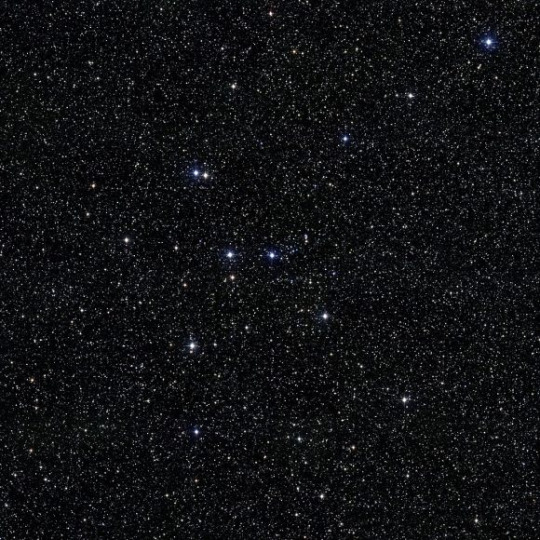
Blink and you'll just not see an open cluster here, yet there is signs of nebulosity and some interesting stars, including a red giant in a binary partnership.
The whole cluster is thought to be around 67 million years old and around 2,000 light years from Earth.

It's also suggested some of the blue stars are blue stragglers, stars that have merged due to their proximity and gravity, and turned blue in the process.
Sometimes the most interesting objects are not the ones going to garner the most social media likes ! because you need to look far deeper to see the interesting stuff that lies within. M25 absolutely fits this bill.
17 notes
·
View notes
Text
Messier 24 - The Small Sagittarius Star Cloud

Part of the Milky Way, the Small Sagittarius Star Cloud is one of the densest areas of stars visible to binoculars and small telescopes. It is visible with the naked eye, although more as a cloud like structure, but viewed with telescopes punctured with dark nebula between us and the stars.
But what makes up this star cloud ? Remember that in the time of Messier galaxies were not really understood, it was just something significant he could see and marked it in his catalogue.
In fact, from our Earth, what the star cloud actually is, is one of the arms of our galaxy, and covers a large region of space along the Carina-Sagittarius arm.


While not a single nebula or cluster or star, Messier while living in an era of conjecture about the possibility of galaxies, would not have understood it as we know the Milky Way today, that has to push forward to the late Victorian era and 1920s with Edwin Hubble's views that those spiral nebula were indeed galaxies just like the one we ourselves sit in.
26 notes
·
View notes
Text
Messier 23 - Open Cluster
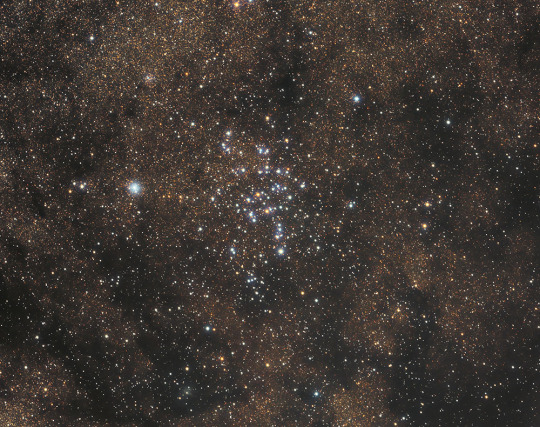
Thought to be around 330 million years old, M23 an open cluster of stars can be found in the constellation of Sagittarius, set against the backdrop of our own spiral milky way galaxy, some 15-20,000 light years behind it, the stars in this cluster are actually 2,050 light years away.
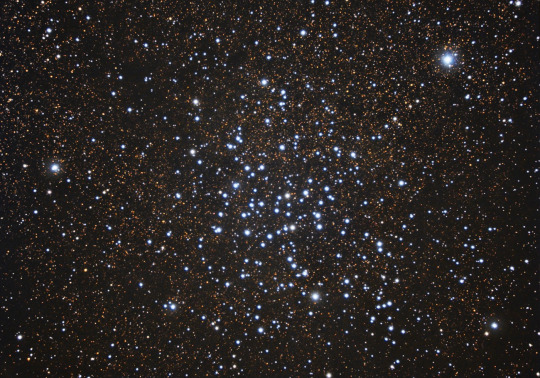
Some of the stars have already ran through their main sequence, presenting as orange or red giants.
There is a cloud of dust and gas behind the structure, but it's not clear if it belongs to it (i.e., the dust and gas that birthed this cluster) or is much further behind and not part of it at all.
All open clusters start life in dense clouds of dust and gas, but it can quickly dissipate or move on, leaving the gravitational bound family of stars grouped together just like this.
25 notes
·
View notes
Text
Messier 22 - The Great Sagittarius Cluster
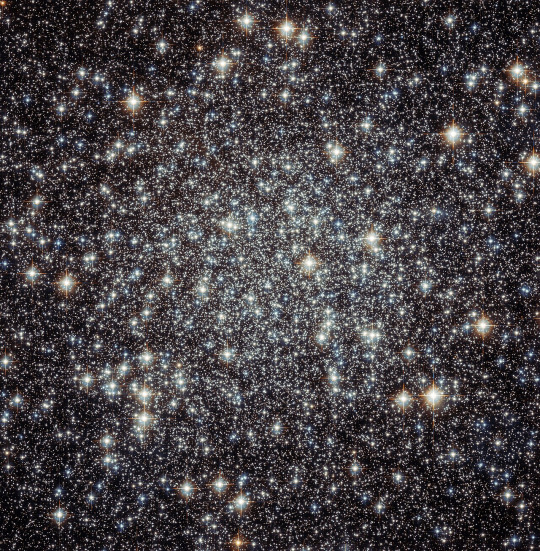
The brightest globular cluster visible by the lower Northern latitudes, and one of the closest to earth at 10,600 light years, the cluster is near the galactic core and has an elliptical shape. However, like some other globular clusters it is shrouded by dust and gas between us and it, and may be responsible for altering it's apparent shape through light extinction.

Cities like Rome, Madrid and those around that Latitude may spot it to the south when Sagittarius is visible for a few hours, but at Mag 6, you'll almost certainly need a decent pair of binoculars to see it. Those further south may get a slightly better view.
60 notes
·
View notes
Text
Messier 21 - Webb's Cross
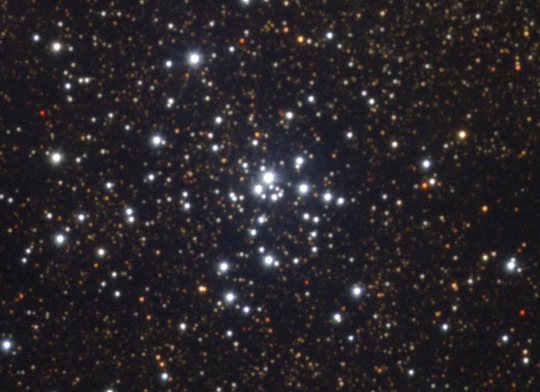
Some open clusters are tightly packed together, M21 is a great example of this and has only a few large B type blue giant stars, most being much smaller mass but requiring much stronger telescopes to see.
The cluster appears to have been created altogether in a single event, isn't visible with naked eyes, but binoculars should resolve the brighter blue stars.
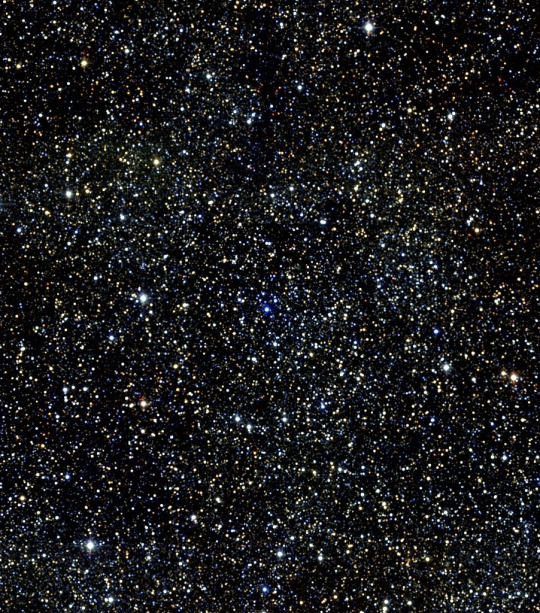
When viewed with a more powerful telescope, you get the picture of how many stars there are in this cluster, the vast majority of them will live a billion years or like our Sun, 10 even 100 billion for red dwarf's etc. The cluster will slowly be pulled apart, some stars ejected through gravitational interactions etc, but it's going to be in our night sky for many more million years for sure.
21 notes
·
View notes
Text
Messier 20 - Trifid Nebula

An interesting object and well within binocular/small telescope range of view at Mag 6.3. The nebula itself is a star forming nebula showing all three of the main types of nebula, the reflection nebula at the top where bright star light is reflected back towards us, and the emissions nebula the pink glow of hydrogen when bombarded by UV light and finally the dark nebula that gives it the distinctive shape, dust and gas that blocks the light behind it.
Inside of the nebula is an open cluster of stars, many huge O type giant stars, the largest being 20 times the mass of our Sun.
If you look towards the bottom of the upper image, you can see a tower of dust and gas with a lighthouse like brightness coming from the top.

Closer observations reveal the giant slug that is laying down these stars :) OK . .maybe not ! but the stack like structures house proto stars, baby stars being born and adding to the open clusters population.
The whole structure is 4,100 light years from Earth in the constellation of Sagittarius.
31 notes
·
View notes
Text
Messier 19 - Globular Cluster
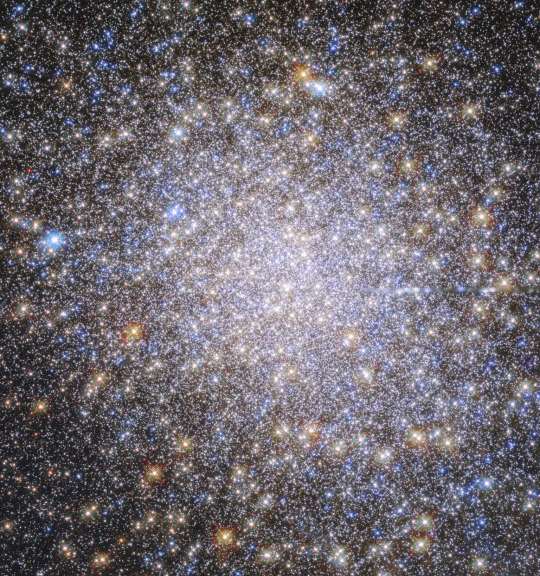
When is a globular cluster, not globular but oblate (flattened orb, similar to the shape of the Earth) ? When it's light is extinct !

The second lower resolution image shows that the cluster appears to be not quite circular, but rather flattened.
However it is suggested that is not quite the case, light is playing tricks through extinction, or better put, the light is being absorbed by dust and gas between us and it, some 28,500 light years from Earth, and is causing this illusion of flatness. When viewed in IR, it appears quite globular.
35 notes
·
View notes
Text
M18 - The Black Swan Cluster
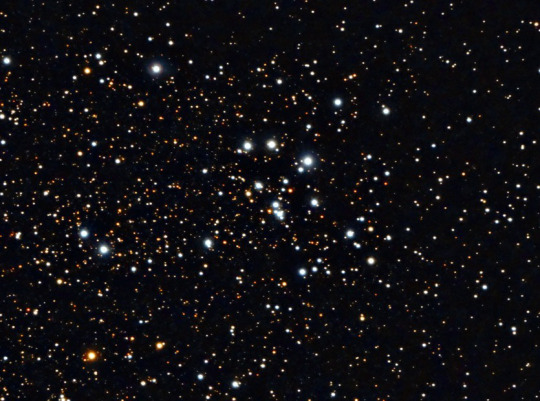
Not so far in the sky from both M16 and M17 lies the black swan cluster, a group of stars left behind after the dust and gas from the nebula has left the scene.
Stars remain in their cluster formation long after, the B and O type blue giant stars for most if not all of their life time, because they don't live long enough to escape but also their mass is stronger making it that bit harder to be ejected by gravitational encounter (although, certainly not unheard of).
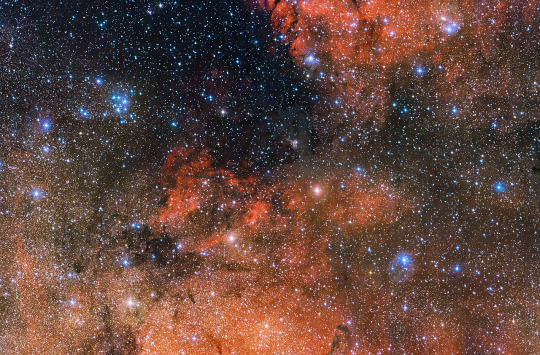
In this image from VLT's OmegaCam you can see the cluster (top left) but you can also see it's set against the backdrop of the milky way, and other areas of dust and gas where star formation still continues.
The cluster sits 4,230 light years from Earth in the constellation of Sagittarius.
47 notes
·
View notes
Text
Messier 17

M17 has a number of given names, The Omega Nebula, The Swan Nebula, Checkmark or Horseshoe Nebula and my own personal favorite, the Lobster Nebula.

It's located not so far from M16 - Eagle nebula, and has the similar columns and star formation features as it too.
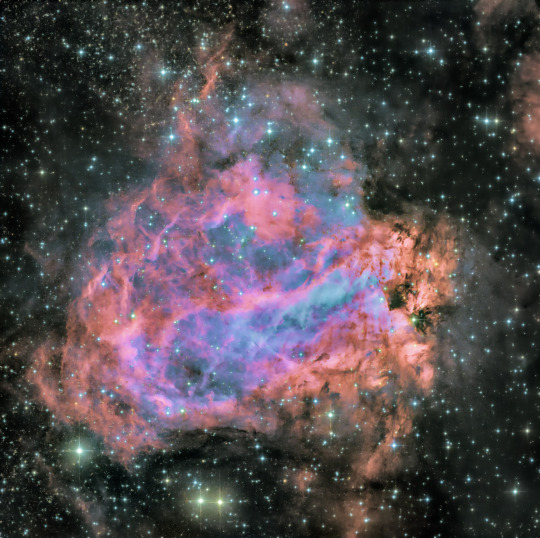
Different filters are used to highlight the different chemicals in the nebula, but also show up some of the stars not so easily visible in the upper image.
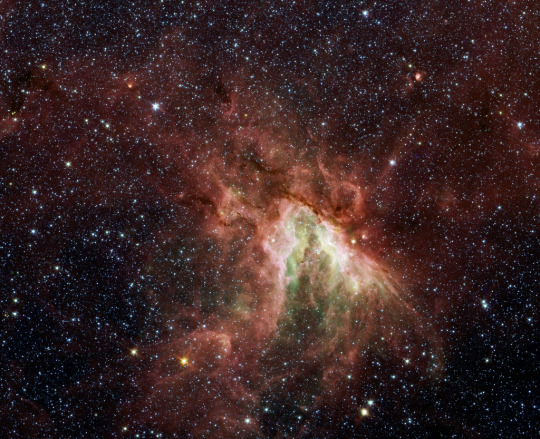
Infra red images see straight through much of the concealing dark nebula areas and show the areas where most star formation is going on. It also highlights the stars this nebula sits over, the milky way in the background of Sagittarius.
29 notes
·
View notes
Text
Messier 16 - The Eagle Nebula
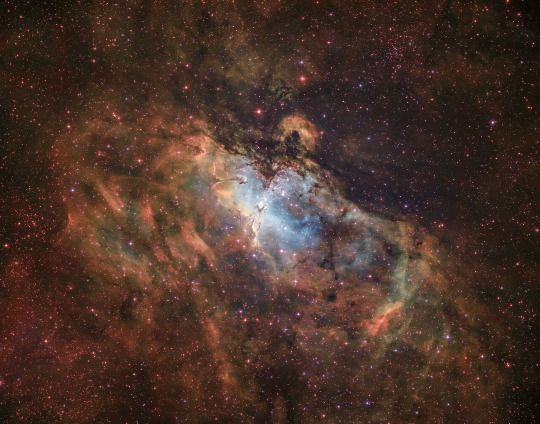
5,700 light years away in the constellation of Serpens lies this iconic area of star formation, an open cluster, but also an emissions nebula with a web of dark dust strands and columns.
Made famous by Hubble in the "Pillars of Creation" image.
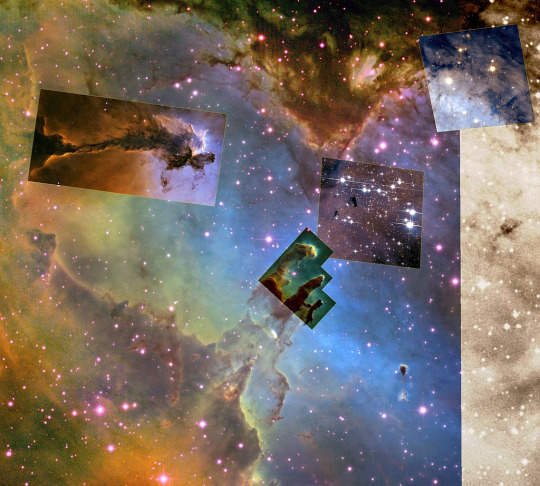
The cluster itself has an estimated 8,100 stars and is thought to be between 1 and 2 million years old. The brightest star HD168076 is two O type stars in binary partnership, some 80 times the mass of our star, and 1 million times brighter.
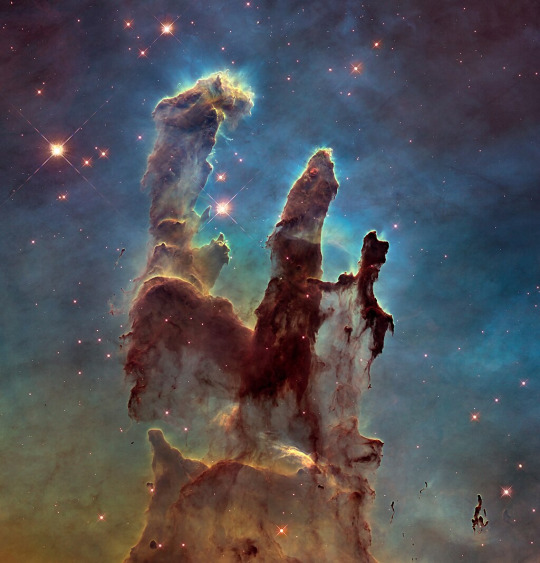
The classic columns with their bright tips is seen in many nebulous regions, and is thought to contain proto stars developing inside.

And another larger example, thought to extend over 9.5 light years.
The structure is just out of reach of naked eyes, but visible in binoculars or small telescopes, but don't expect to see this kind of detail, a smudge may be the best you'll see.
45 notes
·
View notes
Text
Messiers Globular Clusters 12 to 15
Messier seems to have a thing for Globular clusters, at least at the start of his catalogue, although to be fair to him, his comments on these objects explains this somewhat.

This Messier described M12 as "A nebula without stars!"
It's easy to forget in a time of Hubble and JWST that Messier was dealing with instruments not that much better than a good pair of binoculars, and to him the object looked like a giant fuzzy patch, with no individual stars showing.
Messier 12 is odd in that it has a surprisingly low amount of the longest lived low mass stars (red dwarfs, K and G type stars), and with an age of 13.8 billion years old (pretty much the age of the universe itself), it's clearly passed through the milky way so many times, many of the lower mass stars have been ejected or found themselves pulled away, and likely now still live on in the central bulge.
M13 - The Great Hercules Cluster
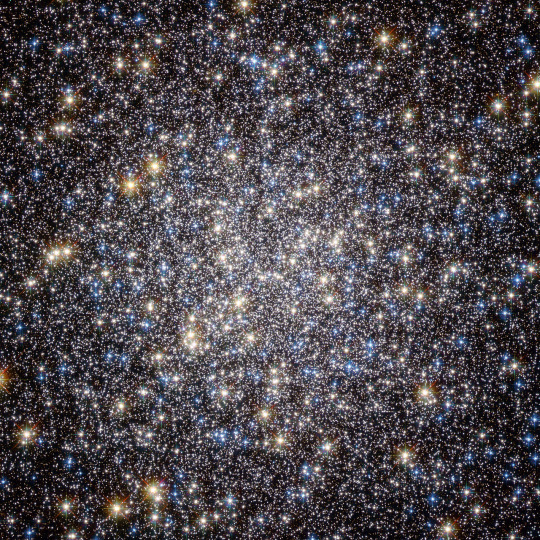
The brightest of the stars in this cluster are the red giants, one in particular V1554 Hercules has an apparent mag 11.95 from 23,000 light years.
Interestingly, there's some blue stars here, but they are not young hot B or O type stars you find in Open Clusters, they are what are known as blue stragglers. Stars are so compressed in the heart of globular clusters that they do regularly merge, and when that happens, a blue straggler can be the product.
M14

Some 30,000 light years away from us in the constellation of Ophiuchus, it's 100 light years across and in total, 400,000 times the mass of our star, 10 times less than the supermassive black hole Sag A*.
M15 - The Great Pegasus Cluster

One of the most densely packed globular clusters known, so much so, the core (central region) has begin to contract in what is known as core collapse, where the mass of stars is so intense, it begins to pull in mass from around it, and most likely forming a intermediate black-hole, although none has ever been confirmed as such.
It is also the only globular cluster to ever be found to have a planetary nebula, Pease 1
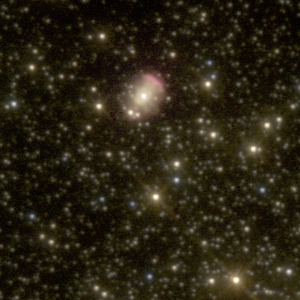
47 notes
·
View notes
Text
2 Globular Clusters and a Wild Duck
M9, M10 & M11

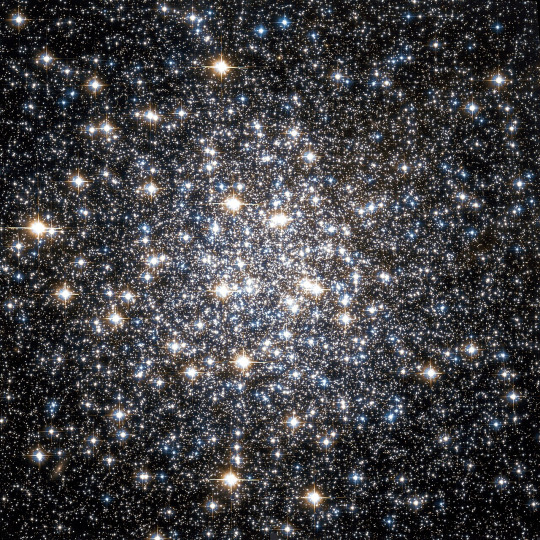

Messier 9 & 10 are globular clusters, ancient objects at 12 and 11.3 billion years old respectively.
Both clusters are in the constellation of Ophiuchus, although at different distances, with M10 being much closer at 17,000 light years, while M9 is further out at 25,800 light years.
Globular clusters tend to follow eccentric orbits around the galaxy, moving out of the galaxy plane and into the halo, and then returning back through the galaxy and out the other side.

M11 may look like a globular cluster, but it's an open cluster, the difference being it's formed in a nebula and often much more recently.
It's similarity to globular clusters however is mostly because it is one of the most massive and compact open clusters known, but the colour is a give-away, young star clusters tend to visibly be dominated by blue giant stars, they don't last too long in the scheme of things, and then return much dust and gas back into the environment for more stars to form from.
It sits 6,100 light years from Earth in the constellation of Scutum, and is right at the limit of being a naked eye object, better viewed through binoculars or telescopes.
35 notes
·
View notes
Text
Messier 8 - The Lagoon Nebula

One of only 2 nebula visible to the naked eye (although at mag 4.6 you're not going to see anything like the above image, just a smudge in the sky) and star forming regions.
It's located 4-6,000 light years from Earth in the constellation of Sagittarius.
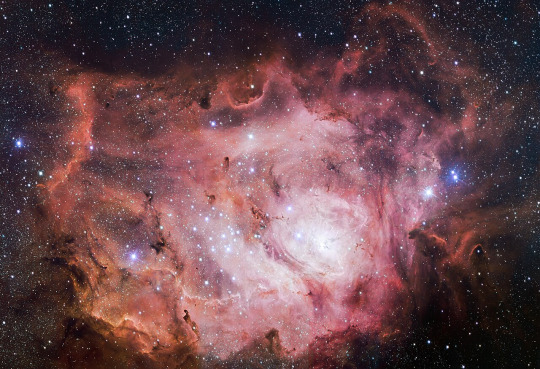
The nebula is an emissions nebula which means the hydrogen emits the pink/red light when bombarded by UV light from the stars within it, and there are a number of young clusters of stars within, some visible and others not so much.

Infra red telescopes can peer through the dust and gas and reveal the stars within.
But so far, some of the best images have come from Hubble including the one at the top, and this one.

43 notes
·
View notes
Text
Messier 7 - Ptolemy Cluster

The furthest south of Messier's objects at -34.8'S simply because in Messier's day, travel took months and was out of reach for most people.
The cluster was known about in antiquity, and as it's name suggests, the Greek (with Roman citizenship) Astronomer Ptolemy is the first to reference it as a nebula, but being an naked eye object, it will have been seen by humans since the dawn of mankind, particularly in the southern hemisphere.
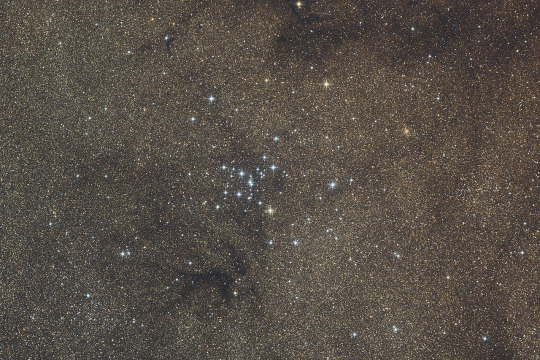
It sits over the backdrop of the Milky Way itself, giving an amazing backdrop of billions of stars.
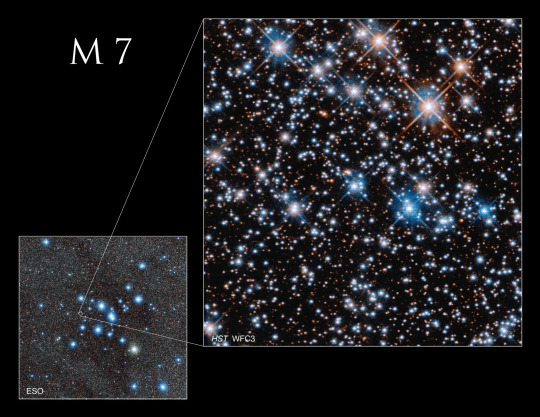
Like most clusters, the blue stars stand out most, due to their brightness, but look closer (as Hubble did above) then you can see there are many smaller long living stars within the cluster.

The whole structure is around 25 light years across, and 980 light years from Earth in the constellation of Scorpius and is estimated to be around 200 million years old.
55 notes
·
View notes
Text
Messier 6 - The Butterfly Cluster
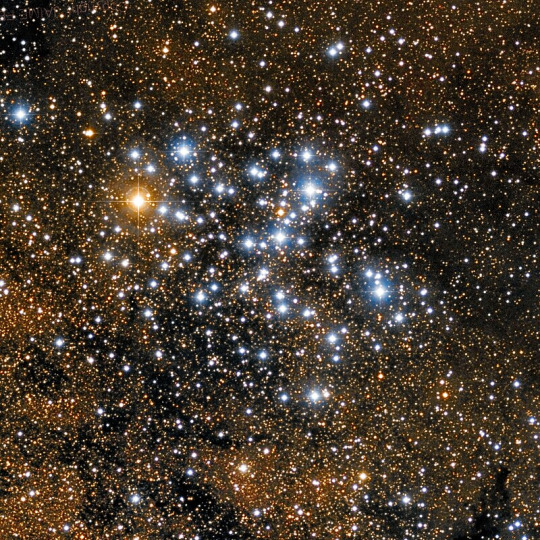
One of the few remaining Messier objects that hasn't been photo'd by Hubble, this open cluster is in the constellation of Scorpius and lies around 1,500 light years from Earth.
It's also one of the few Messier objects at Mag 4.6 you can indeed see with the naked eye.

The brightest star is the K type orange giant BM Scorpii, one of the blue giants that's fallen off the main sequence and is now aging. The entire cluster is thought to be around 94.2 million years old, so it's likely it has lost a few to supernova in the past. The orange star contrasts with the younger B type stars blue.

Most stars are born in such clusters, from Earth the blue giants stand out most, but there is estimated to be over 120 stars in this cluster, many other clusters can be thousands of stars, most being smaller and longer lived, like our own star.
When the nebula has long gone, the stars remained gravitationally bound to each other in these cluster formations, although after a few hundred million years the large blue giants will have collapsed and the longer lived stars may eventually find their own way around the galaxy, if they are not flung out before this by a close call to a much larger star.
33 notes
·
View notes
Text
Messier 5 - The Rose Cluster
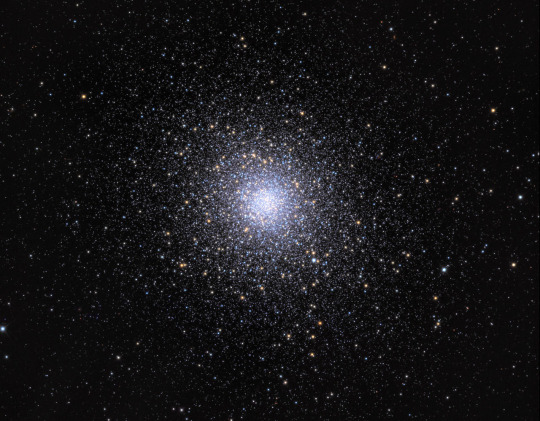
The milky way has over 150 globular clusters, and while most look alike, each has it's own history and mystery to untangle.
It's 24,500 light years from Earth in the constellation of Serpens, and moving away from us currently at around 50km/s. This is because globular clusters tend to have orbits that leave the main plain of the galaxy disk and orbit in and around the halo of lightly populated stars. It is thought that the cluster containers over 100,000 stars all crushed into 165 light years.

Globular clusters are useful for measuring distance, variable stars inside of the cluster that have predictable patterns can provide very accurate distances.
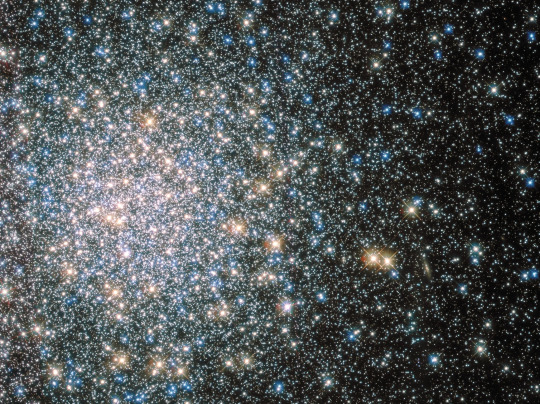
The M5 also has one star that experiences what's classified as a dwarf nova, a binary system with a white dwarf that pulls material from it's main sequence partner, then explodes when it reaches a particular density. Dwarf nova are the same as standard nova's (not to be confused with supernova) but just have shorter time periods between explosion.

31 notes
·
View notes